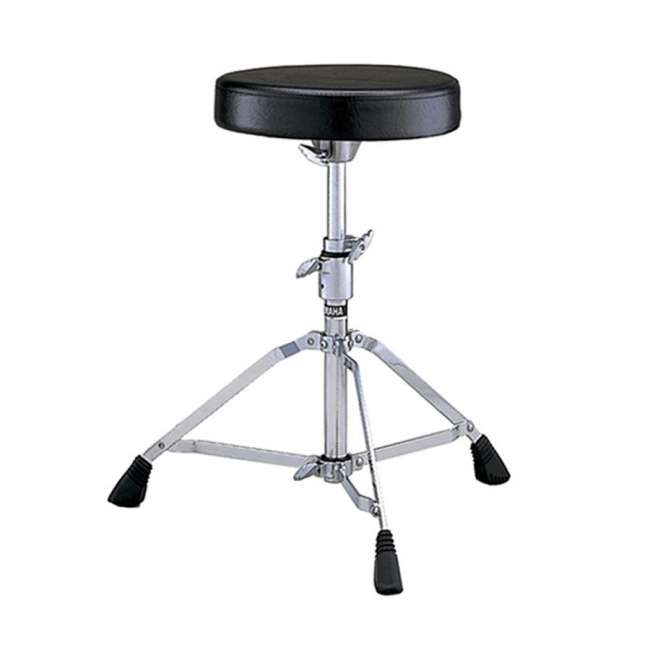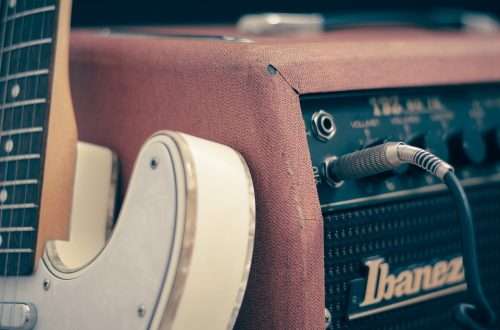
Percussion stools – how to properly sit behind the drums?
See Hardware in Muzyczny.pl store
Drum stools – how to properly sit behind the drums
StołekPearl D-2500BR drum stool with backrest
The first, important element is choosing the right stool for our needs. Currently, the offer of music stores includes a lot of various solutions that will give us the opportunity to work in a healthy and comfortable way with the instrument. But what should you pay attention to when buying?
The stool should be selected according to the parameters of our body. An important element is the seat, i.e. the upper part on which we sit. The seat must be of the right size, as too small will be unstable and simply uncomfortable, and too large will prevent the legs from working properly. A suitable solution will be a specially profiled seat with cutouts for the thighs, which allows for freedom in the work of the legs while maintaining balance.
Another criterion in the selection is a solid base, that is, the legs of the stool. They are three-legged, four-legged, single and double. The more stable it is, the greater the comfort and stability of the seat itself during the game, and without maintaining the right balance of the body, the game will consist in constant focus on maintaining balance.
Appropriate height adjustment is equally important. Personally, I have met more than once with seats that could only be raised to a certain height, which could be locked with a screw, and nothing else could be done about it. Playing at that moment was very difficult for me, because the lack of the possibility of adjusting and adjusting to my height made it difficult for me to perform my work freely. Therefore, let’s look for seats with a large range of height adjustment, preferably swivel or hydraulic, which will give us a guarantee that the previously set height will be maintained throughout the concert.
Here are a few of the products to watch out for:
Yamaha DS750
Medium shelf stool. Adjustable in height 430 – 650 mm, seat diameter 300 mm. Three single legs, additional adjustment lock.

Gibraltar 9608SFT
High-end stool, very stable and comfortable. Rotary height adjustment allows you to adjust it to your own needs. Solid three double legs and a thick and soft seat greatly improve the comfort of the game.
Adjustable height: from 53 to 76 cm, seat thickness: 12 cm.
Tama HT430E10-BR
A solid stool on double legs, stable. Rotary height adjustment 450 – 640 mm, additional lock. Comfortable leather seat.

Yamaha DS950
A drum stool on four double legs guarantees stability while playing. Wide leather seat (480x390mm), wide range of height adjustment.
Tama HT750C Ergo-Rider
Hydraulically adjustable drum stool with three double legs. Solidly made, specially profiled seat with a thigh cut.
Pearl D-2500BR
Percussion stool with a backrest by Pearl. A solidly made, leather seat with a thigh cut. Three double legs guarantee stability, and the rotary adjustment allows for individual height adjustment to suit your needs.
Position at the instrument
How to sit so that the position taken is beneficial for the player and gives a sense of freedom in the game? The first important element is the angle in the legs, and more precisely between the thigh and the calf. It should be a little over 90 degrees, which will allow us to obtain the right power of hitting the foot with as little use of our muscle strength as possible. By using the force of gravity, we only need to give the leg the impulse to strike, and not focus on the whole process (lifting the leg-> impulse-> strike). The same applies to the left leg, which freely presses the hi-hat pedal. While sitting on the seat, you should move slightly to the edge of the seat so as not to block the work of your legs. Push the pelvis forward and straighten your back.
Below I present three positions at the instrument, depending on the height of the stool. Pay attention to the angle between the thigh and calf. The first example shows the position “too low”, the second “too high”, the third shows the correct height.
The distance FROM the instrument must allow for freedom of movement, i.e. the elbows along the body (too close a distance will tilt the elbows back, and the angle of the legs will also be unfavorable). I know from experience that as long as adopting the right posture is not our habit, our body will return to the learned (seemingly more comfortable) position, so we should constantly improve our figure. The position on the instrument is certainly an individual matter and you should find a golden mean. Thorough improvement of your posture will be very beneficial for our health and comfort at work.
Instrument setup
The positioning of the instruments next to the set is as important as the position with it. The instrument is a tool in our hands and it is up to us how we use its capabilities. Therefore, the most important thing is to have FULL control over it (free movement from instrument to instrument without unnecessarily changing the sitting position).
When observing many excellent drummers, you can see different ways to put the instruments apart. One thing is certain – the positioning of the toms, cymbals and snare drum in relation to their position, in a way, inspires the appropriate style of playing. This is due to many factors, such as the angle of the stick, various performance techniques, variable articulation and dynamics. Finding the right setting for us affects our own sound, so it’s worth watching other drummers, try to imitate them and look for similar solutions.
Summation
In the above article, I gave you some tips to make your drumming a little easier. Correct posture, height, distance, and the type of stool we sit on have a huge impact on our game. The trick in playing the drums is to skillfully use the force of gravity to the benefit of the player, and the appropriate adaptation and setting of your instrument will be the next step to successfully perform this wonderful art! Let’s take care of our spine!
Position at the instrument
How to sit so that the position taken is beneficial for the player and gives a sense of freedom in the game? The first important element is the angle in the legs, and more precisely between the thigh and the calf. It should be a little over 90 degrees, which will allow us to obtain the right power of hitting the foot with as little use of our muscle strength as possible. By using the force of gravity, we only need to give the leg the impulse to strike, and not focus on the whole process (lifting the leg-> impulse-> strike). The same applies to the left leg, which freely presses the hi-hat pedal. While sitting on the seat, you should move slightly to the edge of the seat so as not to block the work of your legs. Push the pelvis forward and straighten your back.
Below I present three positions at the instrument, depending on the height of the stool. Pay attention to the angle between the thigh and calf. The first example shows the position “too low”, the second “too high”, the third shows the correct height.
The distance FROM the instrument must allow for freedom of movement, i.e. the elbows along the body (too close a distance will tilt the elbows back, and the angle of the legs will also be unfavorable). I know from experience that as long as adopting the right posture is not our habit, our body will return to the learned (seemingly more comfortable) position, so we should constantly improve our figure. The position on the instrument is certainly an individual matter and you should find a golden mean. Thorough improvement of your posture will be very beneficial for our health and comfort at work.
Instrument setup
The positioning of the instruments next to the set is as important as the position with it. The instrument is a tool in our hands and it is up to us how we use its capabilities. Therefore, the most important thing is to have FULL control over it (free movement from instrument to instrument without unnecessarily changing the sitting position).
When observing many excellent drummers, you can see different ways to put the instruments apart. One thing is certain – the positioning of the toms, cymbals and snare drum in relation to their position, in a way, inspires the appropriate style of playing. This is due to many factors, such as the angle of the stick, various performance techniques, variable articulation and dynamics. Finding the right setting for us affects our own sound, so it’s worth watching other drummers, try to imitate them and look for similar solutions.
Summation
In the above article, I gave you some tips to make your drumming a little easier. Correct posture, height, distance, and the type of stool we sit on have a huge impact on our game. The trick in playing the drums is to skillfully use the force of gravity to the benefit of the player, and the appropriate adaptation and setting of your instrument will be the next step to successfully perform this wonderful art! Let’s take care of our spine!





